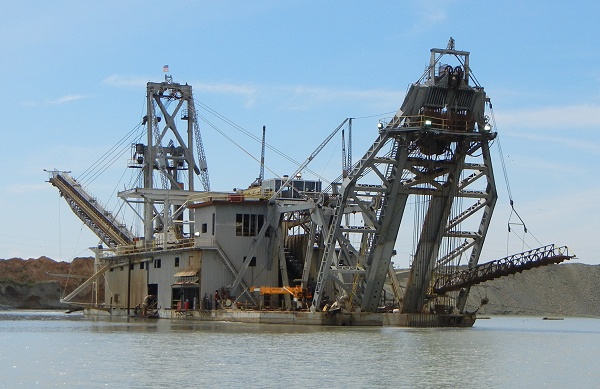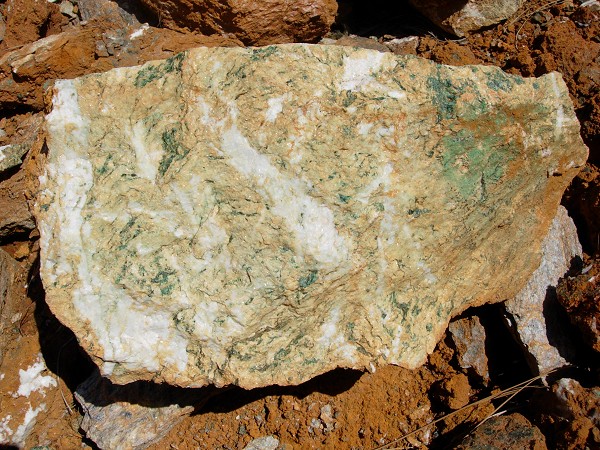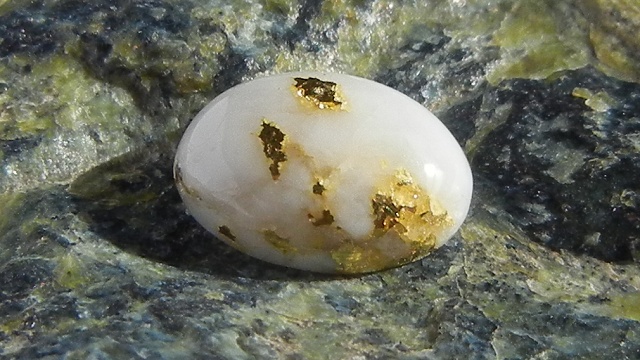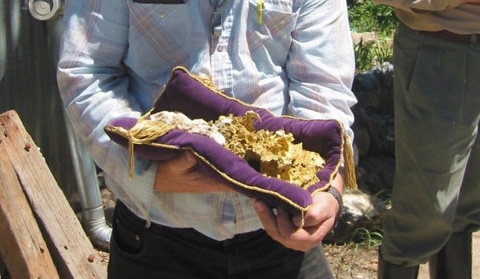Since California became a state in 1850, it has had a gold industry: sometimes booming, sometimes just thriving and sometimes under its own version of Prohibition. Lately California gold has become an endangered species. The last producers in the Mother Lode are down to less than a handful, but it looks like the industry is ready to resume.
Gold was always known in the mountains of California, even before James Marshall famously spotted nuggets in his new millrace near Coloma on 24 January 1848. But Marshall's find sparked the first serious flush of gold production as thousands of men waded into the Sierra Nevada rivers, sifting the gravel with their pans and sluices. They've been there ever since, ranging from weekend panners to elaborate syndicates. It was the syndicates that ruined things for everyone else with their notorious hydraulic methods. Before the courts shut down the industry in 1884, operations progressed from the gravel terraces of the Central Valley into the mountains, where hydraulickers stripped large swaths of land of their woods and soils and sent the waste sediment downstream to smother the farmlands of the Central Valley.
Hydraulic mining was banned from discharging waste into the Sacramento River. That left two ways to keep doing it. One was to strip other rivers instead, most notably the Trinity River, where the practice lasted into the mid-1900s. The other was to dredge Central Valley gravels without affecting the river. The huge gravel beds laid down in the Valley by the Yuba and Feather rivers, where the first gold dredger set to work in 1850, nurtured a long-lasting industry based on floating dredges. The last of these, Yuba Gold Dredge No. 17, is still at work there today. By digging up one side of a pond and depositing the waste on the other, the great dredge slowly travels across the gravel fields east of Yuba City collecting enough powder-fine gold to pay for itself. The sand and gravel can be quarried again and sold later as aggregate.

The hard-rock mines of the Sierra Nevada, hundreds of them, produced the majority of California's gold and populated the region with strong communities. Without them the Mother Lode country would be a thinly peopled land of loggers like the northern Coast Range. The death blow to this industry was a federal wartime order in 1942 that halted all work. For the next five years the shafts filled with groundwater and the workers dispersed, making it uneconomical to reopen any but the richest deposits. Over the next decades the slow decline in the value of gold squeezed out what mines could be revived, and then the regulatory climate shifted to give nature a little more say.
Today, Carson Hill Rock Products, south of Angels Camp, still digs the fabulous ground that yielded the 195-pound Calaveras Nugget in 1854. But its main business is the green-veined decorative rock called mariposite. I am told that the operators keep their eye out for gold as they go, but produce it from the richest pockets only as a byproduct and thus avoid many of the regulations imposed on a gold mine.

The steady—apparently permanent—high price of gold today is driving a few long-standing efforts to reopen large-scale gold mining in the Sierra. Foremost of these is the Lincoln Mine project, in Amador County between Jackson and Plymouth, where the Sutter Gold Mining company has methodically gotten all its permits in order and anticipates starting to produce ore for real this spring.

